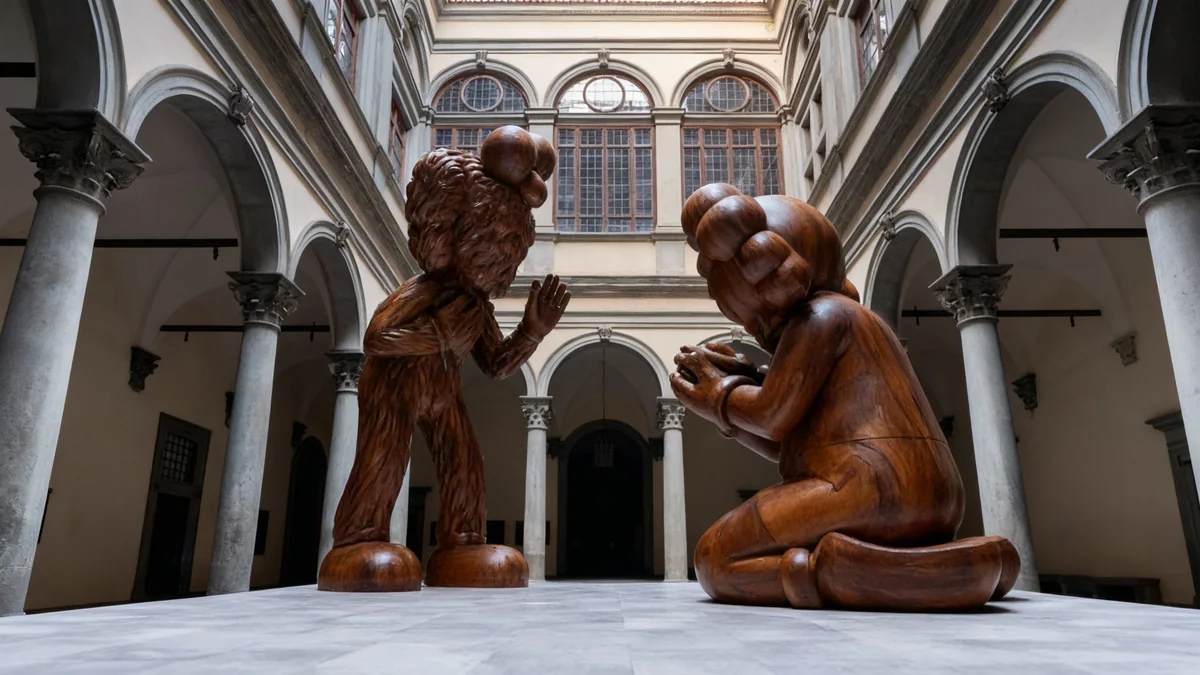Highmark Stadium in Orchard Park, New York, recently became the focal point for a large-scale art project. The Rochester Institute of Technology (RIT) led its 37th 'Big Shot' photography initiative at the venue, transforming the stadium into a canvas for light painting. This event involved thousands of volunteers and utilized specialized photographic techniques to create a unique image of the landmark.
The resulting photograph will be displayed in the new stadium once it opens next season. This project not only highlights the stadium itself but also RIT's innovative approach to photography and collaborative art.
Key Takeaways
- Highmark Stadium served as the canvas for RIT's 37th 'Big Shot' project.
- Thousands of volunteers participated in the large-scale light painting event.
- The project utilized extended exposure photography with flashlights and strobes.
- This year marked the first time a full 360-degree panoramic image was captured.
- The final image will be displayed in the new stadium.
RIT's 'Big Shot' Project: A History of Light Painting
The 'Big Shot' project is a signature RIT initiative that began in 1987. Its primary goal is to teach students how to solve complex problems using basic tools and teamwork. The project involves using various light sources, such as flashlights and strobes, to illuminate a structure during a long-exposure photograph.
Over the years, the 'Big Shot' team has photographed numerous iconic locations. These include famous sites such as Churchill Downs, known for its horse racing, the historic Alamo in Texas, and the Smithsonian Institution in Washington D.C. Each project aims to capture the essence of the landmark through a unique artistic lens.
Project Background
The 'Big Shot' project at RIT is more than just a photography exercise. It is a collaborative educational experience. Students learn about light, composition, and teamwork in a real-world setting. The project brings together RIT students, faculty, staff, and community members.
Thousands Unite to Illuminate Highmark Stadium
On Saturday night, thousands of students and community volunteers gathered at Highmark Stadium. Their task was to 'paint' the 52-year-old stadium with light. The volunteers used flashlights and other portable light sources. Meanwhile, the core 'Big Shot' camera team captured the extended exposure image.
The collaboration created a powerful visual. The stadium, which has stood for 52 years, became a glowing centerpiece. This collective effort is a hallmark of the 'Big Shot' tradition, emphasizing community involvement in artistic creation.
"Whether people came out because they love photography, the Bills, or both, the fact that we had thousands of people working together to create one photo is a powerful experience," said Eric Kunsman, co-coordinator of the Big Shot and assistant professor at RIT’s National Technical Institute for the Deaf.
Key Fact
The RIT 'Big Shot' project has been running for 37 years, consistently engaging thousands of volunteers for each large-scale photographic endeavor.
First-Ever 360-Degree Panoramic Capture
This year's 'Big Shot' at Highmark Stadium achieved a significant milestone. It marked the first time the team captured a full 360-degree panoramic image of a subject. This ambitious approach aimed to document every angle of the expansive stadium.
In addition to the panoramic shot, the team took six supplementary photographs. These extra images ensured that every section and detail of the stadium was thoroughly documented. The comprehensive coverage will provide a complete visual record of the venue.
The Impact on Volunteers and the Community
The project offers a unique memory for all participants. Volunteers can later identify their contribution in the final image. This personal connection strengthens community ties and fosters a sense of shared accomplishment.
Eric Kunsman highlighted the lasting impact of the event. He noted that people can point to where they stood or where they directed their flashlight. This creates an "incredible memory for everyone involved." The project connects art, sports, and community in a meaningful way.
- Volunteers used various light sources, including thousands of flashlights.
- The extended exposure technique allowed light trails to be captured.
- The project fosters teamwork and problem-solving skills among students.
- Previous 'Big Shot' locations include highly recognizable national landmarks.
Future Display in the New Stadium
The final image of Highmark Stadium will have a prominent place. It will be displayed in the new stadium when it opens during the next season. This placement ensures the artwork becomes a permanent part of the venue's history and future.
The display will serve as a testament to the creative intersection of art and architecture. It will also showcase RIT's innovative photographic techniques to a wide audience. The photograph will be a celebrated piece of local art.
Upcoming Stadium
The new Highmark Stadium is currently under construction. It is expected to open in the upcoming season. The inclusion of the RIT 'Big Shot' photograph will add a unique artistic element to the new facility.
The Art of Light Painting
Light painting is a photographic technique where light sources are moved during a long exposure. This creates illuminated patterns or designs in the image. It requires careful coordination and planning, especially on a large scale.
For the Highmark Stadium project, the RIT team meticulously planned the lighting. They directed thousands of volunteers to specific areas. Each volunteer played a role in creating the overall light design, contributing to the final visual effect. The process transforms an ordinary scene into an extraordinary work of art.
This method turns a landmark into a temporary canvas. The final photograph captures the ephemeral light movements. It results in a stunning visual that highlights the structure's contours and features in an artistic manner.




